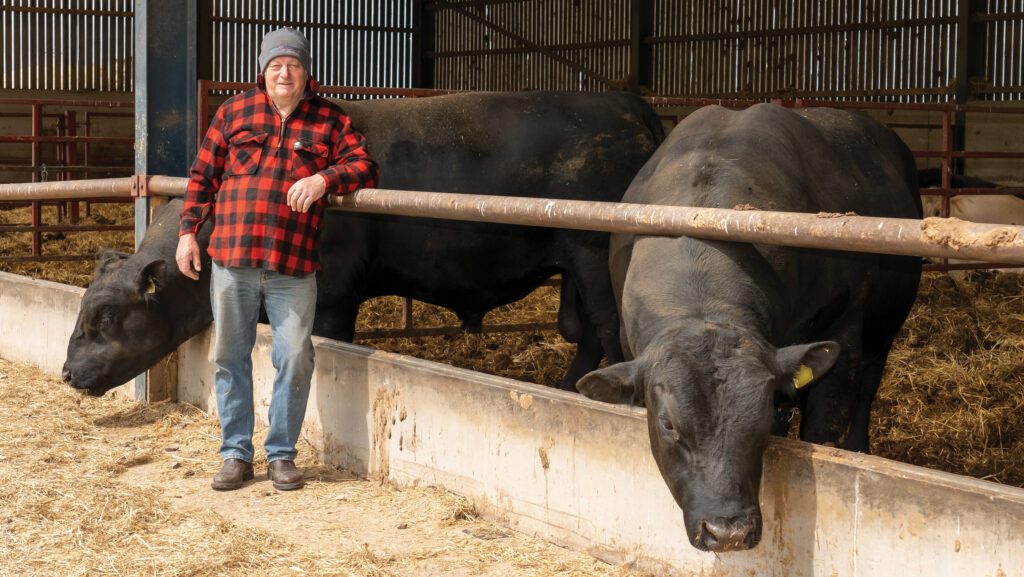Farmer Focus: Why are breeding stock often fed to sterility?
 James Playfair-Hannay © Angus Findlay
James Playfair-Hannay © Angus Findlay Hay and harvest 2024 are now finished, including the beans. While it won’t be a harvest to remember, it has still been memorable for being so challenging.
Yields have generally been no more than average. Wheats have done slightly above average on our light land, and rainfall in this parish is always welcome.
We are hoping for a short winter after producing 400 fewer square bales.
See also: How a lamb producer and breeder uses EBVs for marketing rams
As part of the “Sustainable Beef Group” we are in, we had an autumn meeting recently looking at Angus, Hereford, and their crosses.
In a totally grass-based system, the cattle looked exceedingly well, though the cows would not win prizes at shows, as fashion dictates large, heavily muscled animals.
As ScotEID figures confirm, there has been a huge reduction in suckler cow numbers in Scotland. I suspect many of the herds disappearing will have the wrong type of cow in the wrong place. A change of mindset is required.
There are various breeds of cattle developed around the globe (and in the UK) to consume grass and forage without the need for cereals and housing, all generating profit.
The Border Union Agricultural Society recently hosted the Kelso Ram Sales, an annual event that attracts buyers and sellers from all over the UK. With 15 rings selling simultaneously, it is a sight to be seen.
The atmosphere was tremendous and so too was the weather. In total, 3,254 rams were sold to average £1,299.19, with gross takings of £3,999,770.
Terminal sire breeds Texel and Suffolk dominated proceedings, with Bluefaced Leicester crossing types outselling the traditional types.
However, I wonder how many of the rams sold will actually manage to tup a ewe. Why do we, as the UK livestock industry, purchase rams that have been fed to a point of sterility on cereals and high-energy diets, when most lamb producing systems revolve around finishing off grass?
We will be weaning the calves in October. This year will be our four-year bovine TB test, adding to the challenge. Knowing how TB affects many Farmers Weekly readers elsewhere, it will be a fraught time until we have the result.
We have tested some young bulls every spring before they head south without any hiccups – but you never know.

